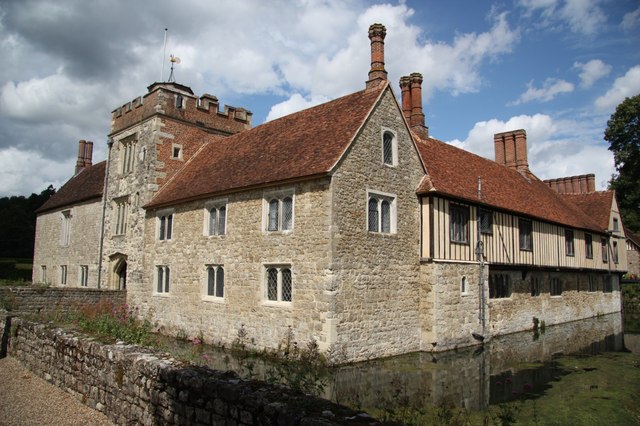
Ightham Mote is a picturesque country manor house near Sevenoaks in Kent, but as with many of these old houses, looks can be deceiving.
Ightham Mote was built in 1340, and was home to the Selby family from the late 16th Century to the middle of the 19th Century. Over the years, it has had many owners, ranging from medieval knights to Tudor courtiers and high-society Victorians. Ightham Mote was given to the National Trust in 1985, and it is now open to the public. It is a Grade I listed building, and considering the way each new owner has added something new, it is believed to be a startling visual history of architectural developments throughout 700 years of British history.
So the story goes, in the 1870s, the owners grew tired of an unearthly chill in the tower bedroom. Normal heat couldn’t overcome it, and eventually workmen were hired to investigate. During their work, they uncovered a small space behind the wall panels – the space was occupied by the skeleton of a woman seated in a chair.
Who was the woman? She is believed by many to be Dame Dorothy Selby. A diehard Catholic, she’d learned of the Gunpowder Plot to blow up Parliament in 1605. She sent an anonymous letter to her cousin, Lord Monteagle, and told him not to attend Parliament on 5th November. Unfortunately the letter was intercepted, the Plot was thwarted, and the conspirators caught. Dame Dorothy’s intervention was discovered, and friends of the Plot walled her up in a secret room and left her to die. If the story is true, then she remained behind the wall for over 260 years. However, many experts believe this tale to be utter hokum, based on a misinterpretation of her memorial at the local church. After all, records state she died in March 1641 – some 35 years after Guy Fawkes was executed.
So if it isn’t Dame Selby, who is it? Another tale dates back to 1552, starring the then occupant, Sir Thomas Browne. Allegedly, he murdered a serving girl and hid the body inside the walls, although if you believe another story, Sir Thomas’ priest was involved in a sordid affair with the servant. After the prist committed suicide, Sir Thomas bricked up the servant.
No matter who the poor woman was found within the walls, the chill continues to haunt the tower to this day. The Grey Lady is unlikely to be the only unlucky ghost wandering the halls of Ightham Mote. The crypt is below the water level of the moat, meaning that prisoners kept there could be disposed of by opening a sluice gate. If that wasn’t enough, there was also a trapdoor added during the Wars of the Roses in the floor of a tower room where suspicious visitors would be dropped into a dark hole and left to starve. The room above the main gate is said to be haunted by the ghost of one such visitor.
If you’re in the area, Ightham Mote is well worth a visit. You can find out more information on the National Trust website.



